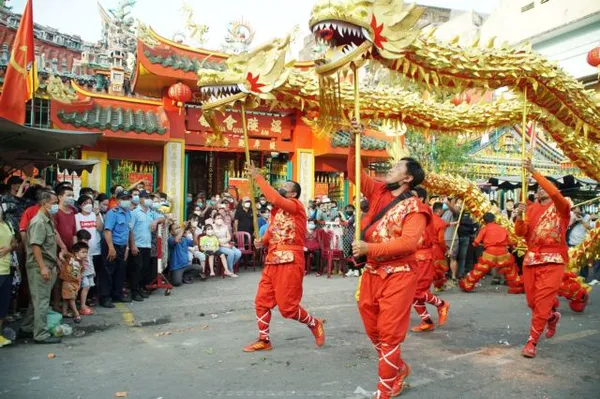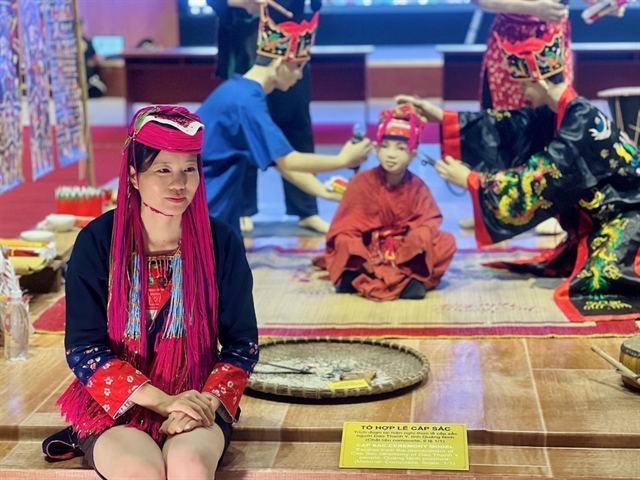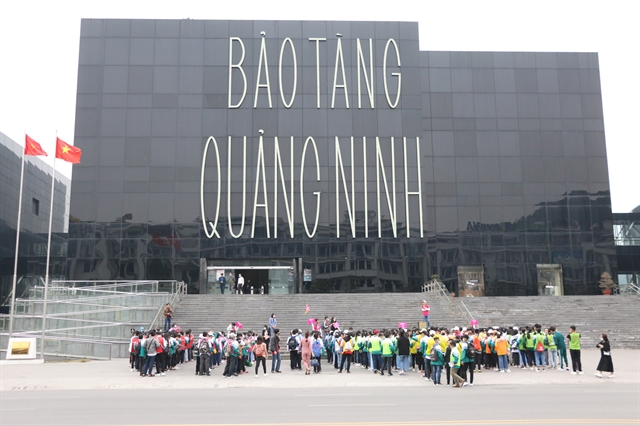 Life & Style
Life & Style

QUẢNG NINH — The Quảng Ninh Museum in Hạ Long City is making efforts to preserve and promote the coastal province's plethora of rich intangible cultural heritage.
 |
| An ethnic Dao Thanh Y woman poses by the display of the Lễ cấp sắc – a rite of passage declaring the coming-of-age of ethnic Dao Thanh Y men at the Quảng Ninh Museum. Photo baoquangninh.vn |
According to statistics from the Quảng Ninh Department of Culture and Sports, the province is home to 362 items and events that are listed as intangible cultural heritage across seven categories.
These include 76 traditional festivals, 25 traditional crafts, 22 works of folk performance art, 14 works of folk literature, 168 social customs, seven spoken and written languages, and 50 folk knowledge traditions. Among these, the 76 festivals, ranging from major multi-day celebrations to smaller regional events, draw significant tourist attention annually.
At the beginning of 2024, the Quảng Ninh Museum organised an exhibition on the Lễ cấp sắc – a rite of passage declaring the coming-of-age of ethnic Dao Thanh Y men.
At the exhibition, the rite was condensed and staged for the public. This event marked a new direction for the museum in integrating Quảng Ninh’s folk performances to enhance the experience for visitors.
In 2023, the province’s Uông Bí City allocated VNĐ800 million (US$32,000) for a project to create a space dedicated to preserving and promoting the cultural heritage of the ethnic Dao Thanh Y group.
 |
| The Thanh Y Dao ethnic minority people seen at the exhibition at the Quảng Ninh Museum. Photo baoquangninh.vn |
The Quảng Ninh Museum has been chosen to coordinate and execute the construction of the project. The space will feature folk knowledge on the traditional craft of sewing and embroidering Dao Thanh Y costumes, provide general information about the ethnic group's traditional festivals as well as knowledge about the construction of their earthen houses, living customs, culture, cuisine and herbal medicine.
In addition to the Lễ cấp sắc of the Dao Thanh Y people, the Quảng Ninh Museum is also supporting Vân Đồn District in restoring the đại phan, a festival of the ethnic Sán Dìu community in Bình Dân Commune, to pray for the villagers' peace, favourable weather and bountiful harvests. The museum has also contributed significantly in reviving the folk art of soọng cô singing and the wedding customs of the Sán Dìu.
The museum’s staff, who are also members of the Quảng Ninh Folklore Association, have produced a number of well-researched books and articles about the Yên Tử historical site, one of the influential cradles of Buddhism in the country, the soóng cọ of the Sán Chỉ ethnic people and the Mở cửa đình (Temple opening) festival and nhà tơ singing in the coastal commune of Đầm Hà.
These studies serve as a reliable foundation for the museum to create performances that enrich visitors' experiences.
Quảng Ninh residents have many other forms of folk singing. To preserve, practice and teach these folk tunes, hundreds of folk singers and professional artists are getting involved. The Quảng Ninh Museum plans to invite these artists to perform for visitors.
 |
| The Quảng Ninh Museum is making efforts to preserve and promote the potential value of the coastal province's intangible cultural heritage. Photo baoquangninh.vn |
Since 2014, the Quảng Ninh Chèo Art Troupe and Quảng Ninh Cải Lương (Reformed Opera) Art Troupe (now known as the Quảng Ninh Art Troupe) have staged the art performance Hoa Muôn Sắc (Multi-Coloured Flowers) for tourists. This show demonstrates that traditional art forms are alive, offering a boundless resource for the development of sustainable tourism.
In the near future, the Quảng Ninh Museum will complete documentation for four new pieces of intangible cultural heritage, including filming the đối – giao duyên singing of the Quảng Ninh coastal region, Lễ cầu mùa, a praying for rain ritual, and the traditional costumes of the ethnic Sán Chỉ group. VNS




